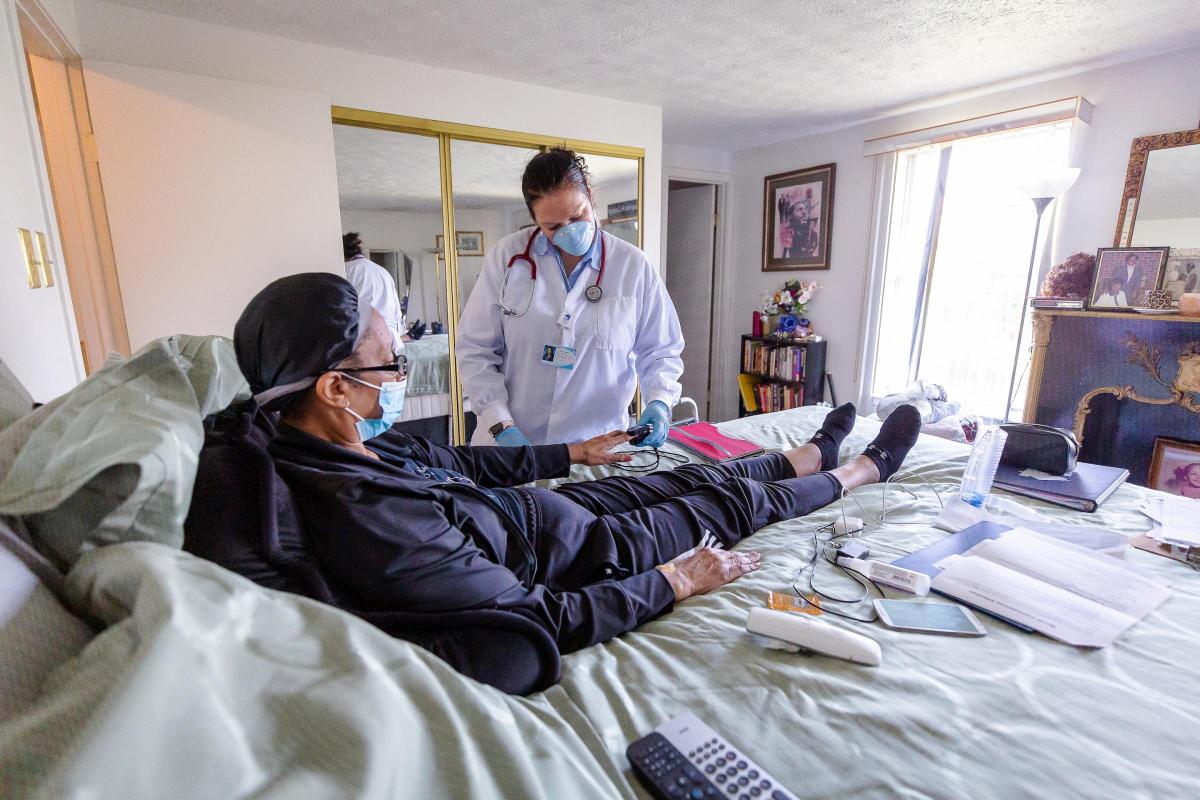Scotland’s Hospital at Home service prevented almost 15,500 patients from having to spend time in traditional hospitals and is estimated to have saved the NHS more than £55 million last year.
Health Secretary Neil Gray said he was “delighted to see the positive impact” the service has had “particularly for elderly patients”.
His comments came as a report from Healthcare Improvement Scotland showed that in 2024-25 Hospital at Home prevented 15,470 patients from being admitted to traditional hospitals – with this helping reduce pressure on such services.
The research found an estimated 672 extra hospital beds and 477 care home admissions would have been needed over the course of the year if Hospital at Home did not exist.
The service provides patients with short, time-limited, acute episodes of care – with people treated as though they had been admitted to hospital while remaining in their own home.
As such, patients can receive help such as intravenous (IV) fluids and oxygen as part of the service, with care delivered by teams of health professionals.
According to the report, Hospital at Home saved the NHS more than 129,000 overnight bed days in 2024-25.
Read More
However, it added that as treatment periods for Hospital at Home were shorter than the average length of a hospital stay, “actual bed days saved is estimated to be in the region of 220,000”.
The report set out how an estimated £16.7 million in healthcare costs were avoided in 2024-25, because Hospital at Home admissions cost less than traditional hospital admissions.
Meanwhile, an estimated £39.4 million in healthcare costs were avoided due to reduced healthcare usage from patients in the six months following treatment from Hospital at Home.
The service currently has the seventh largest acute bed capacity of any hospital in Scotland, providing 525 beds.
But the Scottish Government has set out plans to expand it to 2,000 beds by December 2026 – with First Minister John Swinney having pledged £85 million for this.
Belinda Robertson, associate director of improvement at Healthcare Improvement Scotland, said: “It seems that Hospital at Home is very much here to stay.
“We are finding that more NHS boards are not just increasing the numbers receiving acute hospital care at home, but that their services are maturing, becoming more efficient and being set up in such a way as to ensure they are sustainable.”
She added: “Making sure that Hospital at Home services are sustainable in terms of resources and capacity has been one of our main focuses over the past year and we’re delighted to see Scotland’s NHS boards achieving this.
“For patients, the benefits of being able to be treated in the comfort and familiarity of their own homes is clear to see and this is set to continue.”
Marion Denholm, from Stenhousemuir, praised the care her husband, Bill, 85, received from NHS Forth Valley’s Hospital at Home team.
Mrs Denholm, 82, said: “There are no words to adequately describe the care and attention Bill received.
“We’ve had doctors, advanced nurse practitioners, physiotherapists, occupational therapists, a dietitian and a speech and language therapist all visit our home to provide the care and treatment he required so he didn’t have to go into hospital.
“This meant he was able to stay in familiar surroundings with his family and still receive the same type of care he would have in hospital.
“I can’t praise the Hospital at Home service enough. It makes so much more sense to treat people in their own homes if you can, rather than occupy a bed in a busy hospital.”
Mr Gray said the report showed the service is “delivering personal, efficient and reliable care to patients across the country”.
He added: “Our expansion of Hospital at Home means more people will benefit from first-class NHS care in the comfort and familiarity of their own homes.
“By increasing capacity to 2,000 beds by December 2026, we’re on track to create the largest hospital in Scotland —bringing care closer to where people live and need it most.
“I am delighted to see the positive impact Hospital at Home is having across Scotland, particularly for elderly patients who can now receive high-quality care without the need to travel to hospital.
“I am grateful to all of the partners who are delivering this service and look forward to its further expansion in the months ahead.”
